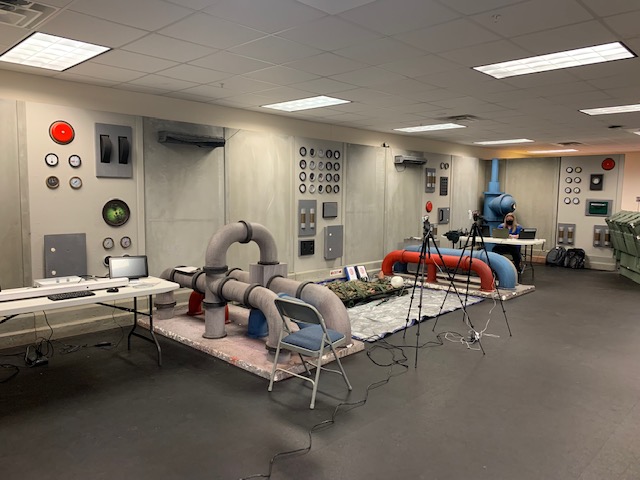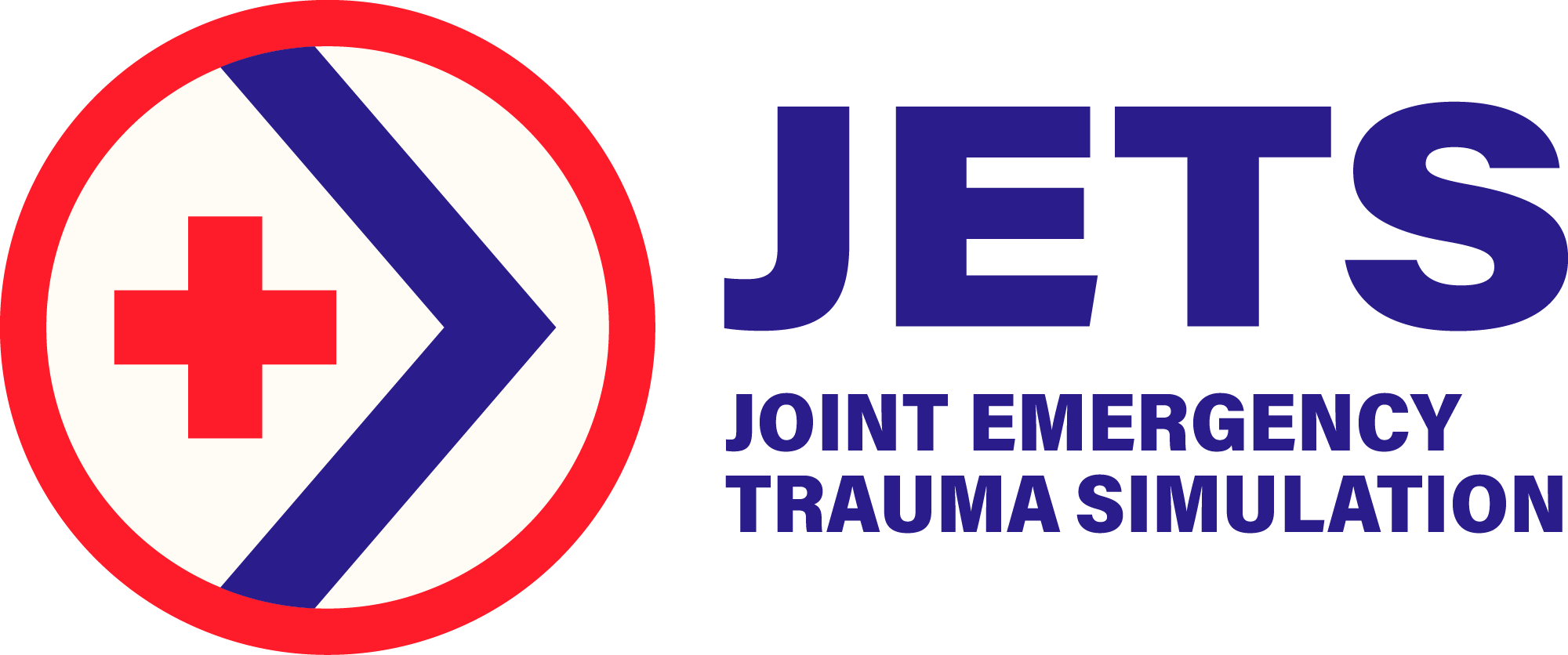Program Description
EXECUTIVE SUMMARY
JETS enables standardized, integrated, state-of-the-art training through an interconnected web of systems designed to serve as joining simulations that allows military organizations and other government agencies for seamless monitoring and tracking of patient movement from point of injury (POI) to hospitalization in a controlled area.
While JETS will not dictate how services and agencies conduct internal training, it will provide a federated platform enabling integrated, interoperable training across all roles of care, delivered via training center and point-of-demand capabilities.
JETS enables interservice individual, team, and unit-level training focusing on patient monitoring and tracking and integrates career-long benefits for medical service personnel in support of worldwide COCOM requirements.
JETS:
- Is a System of systems (SoS)
- Integrates & supports existing investments (sites & equipment)
- Addresses Joint Staff-identified capability gaps
- Offers Point-of-Demand (PoD), optimum-cost training
- JETS infrastructure is capable of supporting entire Medical Training Family of Systems (FOS)
- Supports Joint Force Health Protection (JFHP) functional capability, Joint Patient Movement (JPM) Capabilities: the ability to conduct the efficient joint movement of casualties to appropriate levels of care
- Leverages existing training sites & global PoD training, thus decreasing the need for new training sites; any new sites required will focus on joint bases and geographically isolated areas.
- Enables “lifetime learning,” supports individual learning styles, and customizes learning to reduce ineffective training—individualized training conserves time, funding, and equipment.
What DoD challenges does JETS address?
- Limited response systems exist that is familiar to all military services; this is inefficient during joint-service exercises.
- Inefficient use of centralized training sites results in high travel costs, in terms of money and time.
- The lack of standardization among training resources across the DoD hinders a systematic approach to emerging threats.
- The existence of duplicate training programs across branches of service is not cost-effective.
- With no existing architecture to standardize training tools, operations personnel must pick and choose which tools to use.
- Sub-optimal insights into training program effectiveness.
- Inefficient evacuation and transport can overburden frontline medical personnel during combat operations.
- 80% of medical errors occur in the evacuation/treatment phase, largely due to inefficient information transferred between roles of care.
- Enabling trainees to satisfy assessment requirements in fewer attempts eliminates redundant training once individuals have achieved competency.
- Lack of training performance reporting results in learners having to repeat training previously mastered.
- Training methods are inconsistent from station to station.
- Training materials are not sufficiently customizable to specific needs, emerging challenges, or unique environments.
- Training is not adaptable to certain factors that learners expect to confront in the real world.
- Current training fails to account for the likelihood that battlefield demands on medical personnel will exceed their capacity.
JETS I Project Summary
Within the military Medical Simulation Enterprise (MSE) arena a variety of independent subsystems support Service and organizational specific missions.
The mission of the JETS research project was to develop an overarching architecture that ties together these disparate medical training subsystems. The proposed JETS architecture includes a common, objective, engineering-oriented lexicon; a governance strategy; and a definition of shared services and application program interfaces (API) for interoperability. Establishing an interconnected Department of Defense standard training and simulation system will have a synergistic effect, resulting in an adaptive system that is more effective, efficient, and cost-effective. By following Department of Defense Architecture Framework (DoDAF) guidelines and systems engineering processes, this study and design effort systematically gathered and transformed requirements for JETS into an architecture description that provides a basis for understanding the current state of the potential component parts, the work required to achieve the MSE vision, and the staging of further development to bring the full family of systems online. The JETS I Project Summary “Final Report” is currently unavailable.
JETS II Project Summary
Proper medical training is critical to ensure that Service component members are prepared for wartime deployment, with a particular emphasis to support the en route care of patients from initial point of injury through several echelons to Continental U.S.
(CONUS)-based military hospitals. Currently, medical training is generally conducted within each Service component “independently” (i.e., Army, Navy, Air Force, etc.) and our NATO/Coalition allies, with only occasional combined training. In addition, there is a wide repertoire of tools, devices, and approaches used to provide deployable training to Service members, ranging from devices (e.g., manikins) to computerized simulations to formal didactic training through internet-based, video, or classroom-style instruction. This study and design effort systematically gathered and transformed requirements for JETS into an architecture description that provides a basis for understanding the current state of the potential component parts, the work required to achieve the Medical Simulation Enterprise (MSE) vision, and the staging of further development to successfully bring the full family of systems online. The JETS II Project Summary “Final Report” is currently unavailable.
JETS III Project Summary
JETS III Final Report – Training to improve readiness is a key focus of the U.S Department of Defense (DoD), and this is particularly important for ensuring a high level of proficiency for military medical providers. The ongoing Joint Emergency Trauma Simulation (JETS) project is one of the current DoD initiatives to more effectively use clinical simulation to improve clinical proficiency. The core capability of the JETS project, currently under development by IVIR Inc., is to allow current, commercial off-the-shelf, medical simulations, and clinical simulation support systems to communicate with each other (in a federated network, over a standard Internet or intranet connection). The JETS III Project Summary “Final Report” is currently unavailable.

